The Venetian Republic: Unveiling Its Legacy of Commerce, Culture, and Dominance
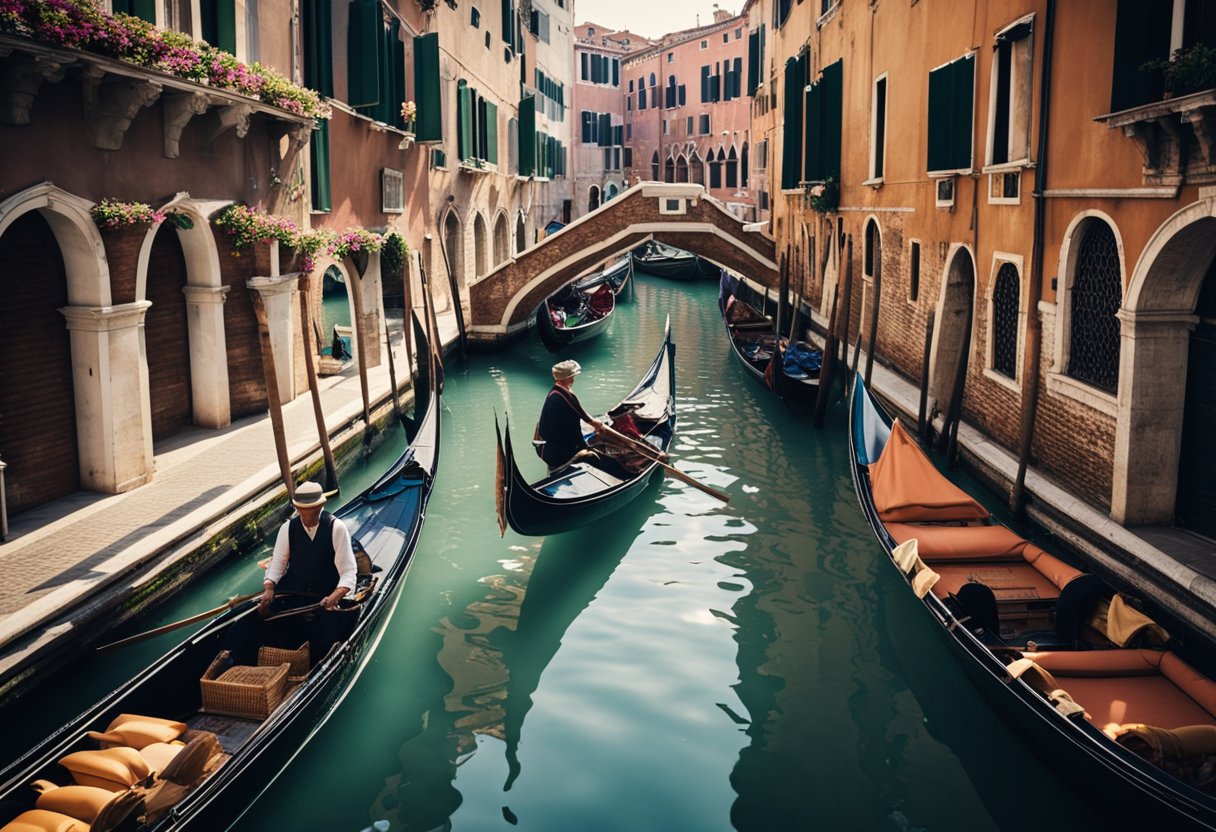
Updated On: April 22, 2024 by Marwa Alaa
The Venetian Republic, known as “La Serenissima,” is synonymous with grandeur and prosperity, an illustrious trading empire that thrived from the seventh century until its demise in 1797. Throughout its millennium-long presence, Venice carved out an indelible mark on the world stage as a hub of wealth, power, and cultural significance. At its height, this maritime dominion not only dominated trade routes across the Mediterranean but also became a cradle of the arts, influencing the Renaissance with its opulent tastes and patronage.

Venice’s story is one of shrewd political manoeuvring and social innovation. As a state that masterfully navigated the tides of international relations, Venice maintained its sovereignty by balancing diplomatic ties with formidable powers. This strategic prowess was matched by its societal and urban advancements, which turned the city into a spectacle of architectural ingenuity. Equally vital to its legacy were the diverse trade commodities and fine craftsmanship that made Venetian goods highly sought after across Europe and the Orient.
Table of Contents
Origins and Rise of La Serenissima
Venice’s ascent to prominence is a tale of strategic governance and advantageous alliances. Aptly named La Serenissima, or ‘the most serene’, the city’s early days were intricately linked with the Byzantine and Frankish empires, setting the stage for its ascent as a maritime power in the Adriatic and beyond.
The Founding and Early Governance of Venice
Our history begins with a scattering of islands in the Venetian Lagoon, seeking refuge from the turmoil following the fall of the Roman Empire. Venetians, or inhabitants of Venetia, established their fledgeling settlement in this intersect of the Adriatic, away from mainland turmoil, and crafted it into a hub of maritime trade. The Exarchate of Ravenna, under Byzantine influence, encompassed Venice, offering a measure of protection and cultural influence.
The political structure of early Venice was democratic in spirit. The first Doge, or leader, Ursus, often called ‘Orso’, was elected in 726 AD. This system of governance was honed over time, evolving through doges such as Paoluccio Anafesto, and as the city grew in power, so too did its ability to act with increasing independence from entities like the Exarchate of Ravenna and the troubled kingships within Italy.
Influence of Byzantine and Frankish Empires
Our relationship with the Byzantine and Frankish empires was complex, often marked by shifting loyalties and strategic diplomacy. Throughout its early history, Venice often found itself pulled between these two great powers, leveraging its critical maritime position to its advantage. During Pepin the Short’s rule, the Frankish Empire sought to gain control over the lagoons—but the Venetians, resilient in their island fortress of Malamocco, resisted and managed to secure autonomy by carefully balancing pro-Frankish and pro-Byzantine sentiments.
As the influence of the Lombard Kingdom waned, Venice’s adept manoeuvring allowed it to shine a light of independence in the formation of its identity as La Serenissima. Political ties favoured the Byzantine connection, which bestowed upon Venice not only commercial privileges but also naval and military support, reinforcing our position in the upper Adriatic and securing the region of Venetia as a bulwark of Byzantine ambitions.
Our story, now centuries in the making, provided a framework for a society that would emerge as a beacon of trade, art, and power—celebrated and revered as much for its strategic diplomacy as for its serene mastery over the challenging waters that were both its shield and its route to prosperity.
Economic Prosperity and Maritime Dominance
The Venetian Republic, at the zenith of its power, exemplified economic prosperity through expansive trading networks and controlled key maritime trade routes in the Mediterranean, securing its status as a formidable maritime force.
Venetian Trade Expansion
Through shrewd negotiations and tactical alliances, we expanded our trade to encompass lucrative markets across the Mediterranean and beyond. Venice’s strategic location enabled us to facilitate and capitalise on the flow of spices, silk, and precious metals, directly impacting our economic growth.
Control of Mediterranean Trade Routes
Controlling the Adriatic Sea was crucial for maintaining our dominance over Mediterranean trade. Our rivals, Genoa and the Ottoman Empire were constantly at bay as we fought to secure critical waypoints like Crete and Dalmatia. Dealing with pirates was another constant challenge, but our powerful navy ensured the safety of Venetian vessels and the goods they carried.
Trade Fairs and Economic Policies
We bolstered our economic might by instituting policies that promoted trade fairs and the efficient exchange of goods. Venetian laws protected merchant interests and paved the way for the robust flow of staples like grain and salt. In these trade fairs, the concept of credit and banking as we understand it today began to take shape, further propelling Venice’s economic machine.
Political Landscape and International Relations
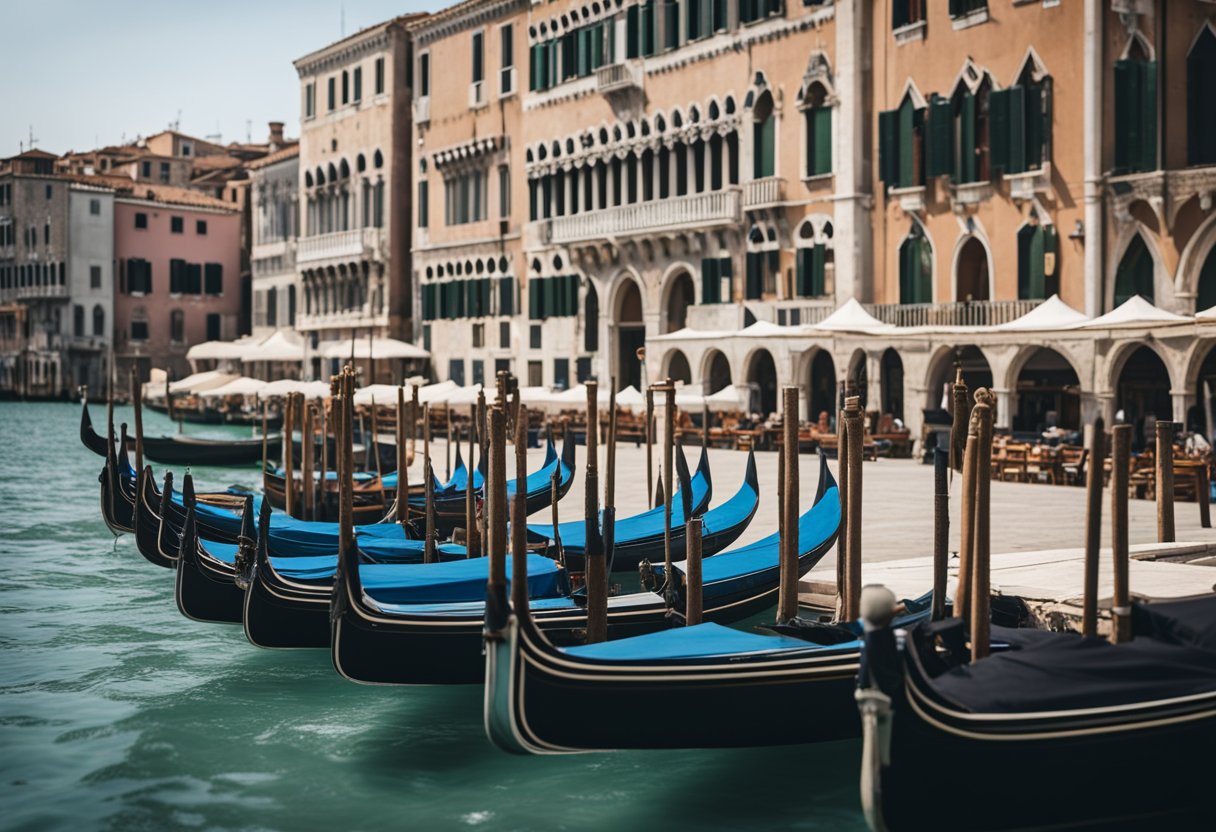
In this section, we shall explore the intricate web of diplomacy, strategic conflicts, and the pivotal League of Cambrai, which notably reshaped the political contours of Venice and its relations with European powers.
Diplomacy and Alliances
The Venetian Republic was renowned for its shrewd diplomacy. Throughout its history, it skilfully navigated through the complex political landscape of Europe, sometimes forming alliances with major powers. Its primary motivation was safeguarding its commercial interests. Indeed, it made careful diplomatic moves with the Byzantine Empire to ensure control over trade routes. Venice’s capacity for forging strong alliances was one of the cornerstones of its formidable maritime power.
Conflicts and Wars
However, Venice’s commercial dominance inevitably led to conflicts. Rivalries, especially with Genoa and the burgeoning Ottoman Empire, flared into wars that often had trade at their heart. The Battle of Agnadello in 1509 stands as a stark example of the defeat of the Venetian forces by the troops of the Holy Roman Empire. This defeat exemplified the ongoing struggle for economic supremacy in the region.
League of Cambrai and its Impact
The League of Cambrai, initiated by Pope Julius II, dramatically altered Venice’s political fortune. Comprising the major forces of Europe, including Spain, the Papal States, and the Holy Roman Empire, the League was an unprecedented union against Venetian ambition. The alliance’s formation underscored the perceived threat Venice posed to European balance. Its impact was profound, disrupting Venetian territorial and political aspirations and signalling a shift in the power dynamics of Renaissance Europe, marking the Republic’s decline well before the arrival of Napoleon Bonaparte.
Culture and Renaissance Influence
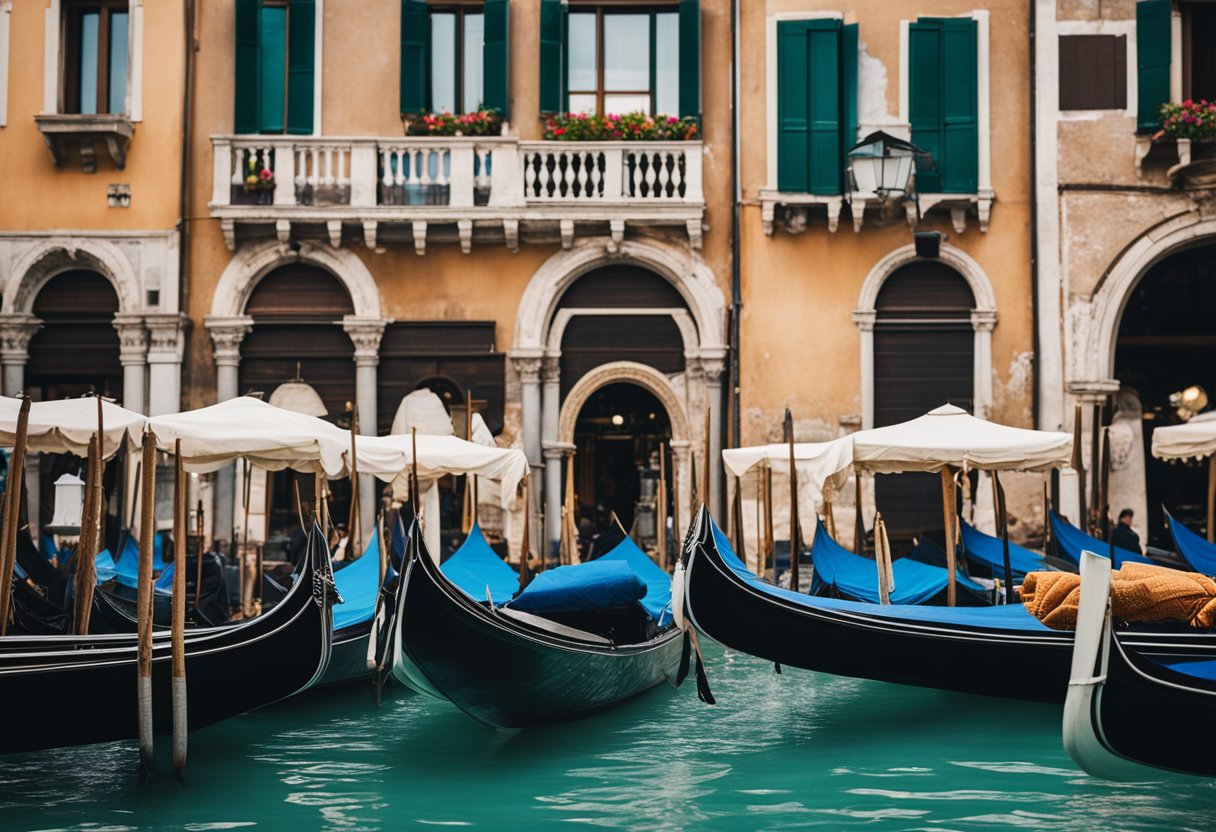
The Venetian Republic was a beacon of culture during the Renaissance, fostering an illustrious period for the arts and profoundly influencing Venetian society. The city’s affluence and strategic position attracted a plethora of talent, catalysing a cultural revolution that would leave an indelible mark on history.
Patronage of the Arts
Venetian nobility and wealthy merchants saw the arts as a means of showcasing their opulence and power. This led to substantial patronage, with families such as the Pesaro and Cornaro commissioning works to decorate their lavish palazzos. Artists like Titian, a leading figure of the Venetian Renaissance, drew upon the rich heritage of their city to produce masterpieces. Their paintings often featured a distinctive use of colour and light, a testament to the city’s trade connections that provided access to exotic pigments.
Our city’s unique relationship with trade facilitated not just the exchange of goods but also of ideas and techniques. For example, the introduction of oil paint from Northern Europe revolutionised the art of painting, enabling artists to achieve new effects in texture and luminescence.
Renaissance Impact on Venetian Society
The Renaissance era uplifted Venetian society in numerous ways, ushering in a wave of humanism and intellectual growth. It wasn’t only in the visual arts that we observed profound developments but also in literature, architecture, and music. The fusion of medieval traditions with the Italian Renaissance‘s innovative approaches led to the distinctive Venetian style known as the Venetian School.
Majestic edifices, some adorned with works by celebrated artist Titian and his contemporaries, echoed the socio-economic vitality of the Republic. The rise of such artists signifies more than an artistic boom; it mirrors a society taking great strides in self-expression and cultural identity. Venetian artists were admired for their skill in capturing the ethereal interplay of light and colour, an innate characteristic of the city’s spirit, imbued with its shimmering waterways and opulent festivals.
Through trade, knowledge, and an unyielding commitment to the arts, Venice carved out a distinct cultural identity that sustained its power and prestige across the centuries, leaving a legacy that still captivates us today.
Social and Urban Development
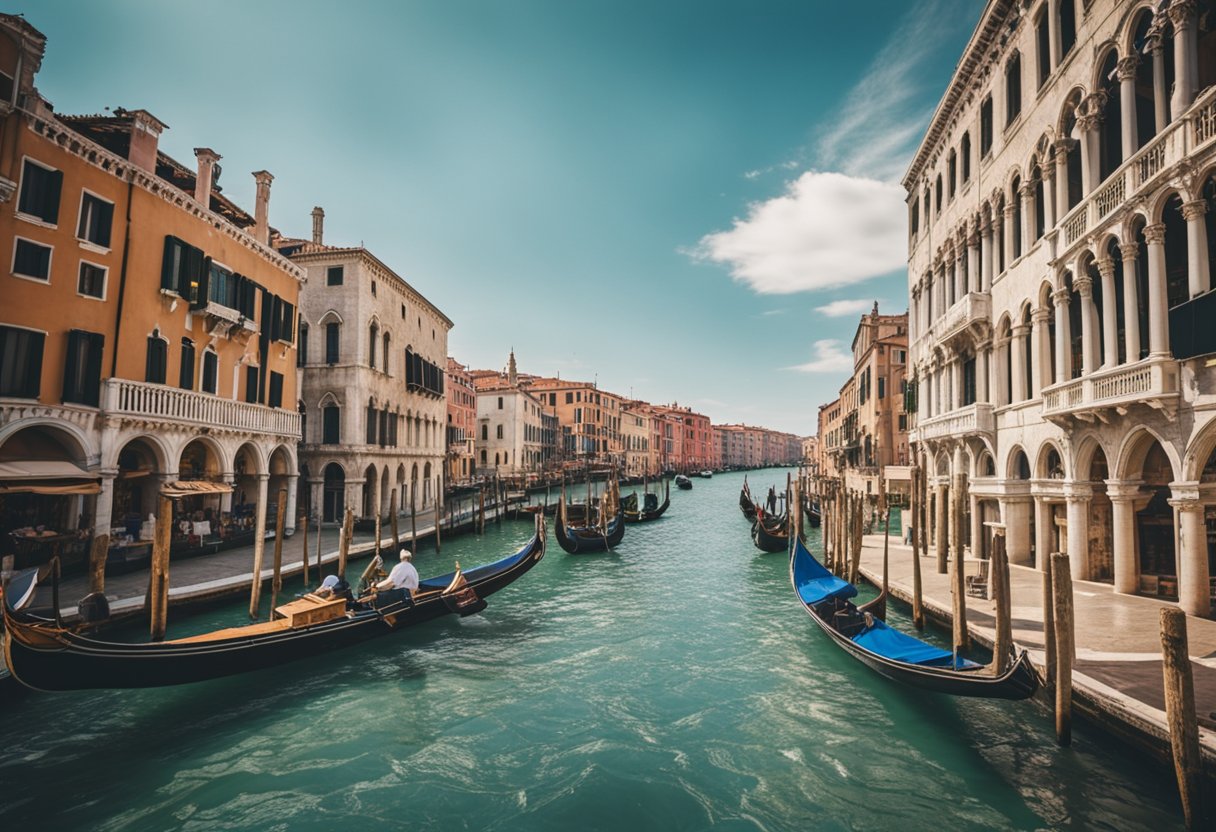
The rise of the Venetian Republic is a narrative deeply incised with the marks of significant social and urban evolution. Driven by ambitious architecture and a distinctive stratification of society, Venice’s development resembled a masterful painting, intricate and vivid in detail.
Architecture and Urban Planning
Venice, a marvel of Northern Italy, stands testimony to the ingenuity of urban planning and adaptability. Its foundational architecture, influenced by Byzantine and Constantinople elements, presents a unique blend of the East and West. The floating city’s trademark, the canals, not only facilitated essential trade but also became an integral part of the city’s structural identity. Key public structures, such as the Doge’s Palace, exhibit the grandeur of Venetian gothic architecture, defining the city’s skyline with its ornate grandiosity and symbolic power.
Social Structures and Classes
Socially, Venice demonstrated a rigid hierarchy that was reflective of its economic might and mercantile spirit. At the zenith stood the Doge, followed by a well-defined nobility entrenched in the city’s governance. Merchants and artisans formed the backbone of the republic, sustaining its economy and cultural wealth. This class was instrumental in cultivating the arts, commissioning works that would immortalise their status within the grand tapestry of Venetian life. Contrastingly, the lower classes, although integral, conducted their lives amidst the laborious ebb and flow of the city’s daily grind.
Trade Commodities and Manufacturing
In the thriving economic landscape of the Venetian Republic, two industries stood out for their quality and demand: lace and glass production, which were pivotal to the global trade operations originating from the region.
Lace and Glass Production
Venetian lace, known as merletto, became synonymous with luxury and artistry throughout Europe. Originating on the islands of Burano and Murano, the intricate designs were highly sought after by Europe’s elite. Particularly, punto in aria, a delicate needle lace technique developed in Venice, showcased the craftsmanship that went into creating these prized textiles.
Murano Glass, prized for its clarity and vibrant colours, reflects a mastery of glassmaking that made Venice a centre of innovation and artistry in the field. The unique glassblowing techniques, which evolved on the island of Murano, allowed our glassmakers to produce an array of exquisite items ranging from functional wares to purely decorative pieces, securing Murano’s reputation for unparalleled quality.
Global Trade in the Venetian Republic
We were at the forefront of global trade during the height of the Venetian Republic, with its strategic position benefiting greatly from access to key routes such as the Adriatic and direct ways to Constantinople, bridging the East and the rest of Europe. This enabled us to dominate the spice trade, with luxury commodities flowing through our ports. Our merchants were known not only for the trade of our famed lace and glass but also for dealing in a variety of goods, including silk, grain, and precious metals. Establishing merchant colonies and agreements with foreign powers, we were instrumental in shaping the flow of goods into and out of Europe.
Decline and Fall of the Venetian Republic
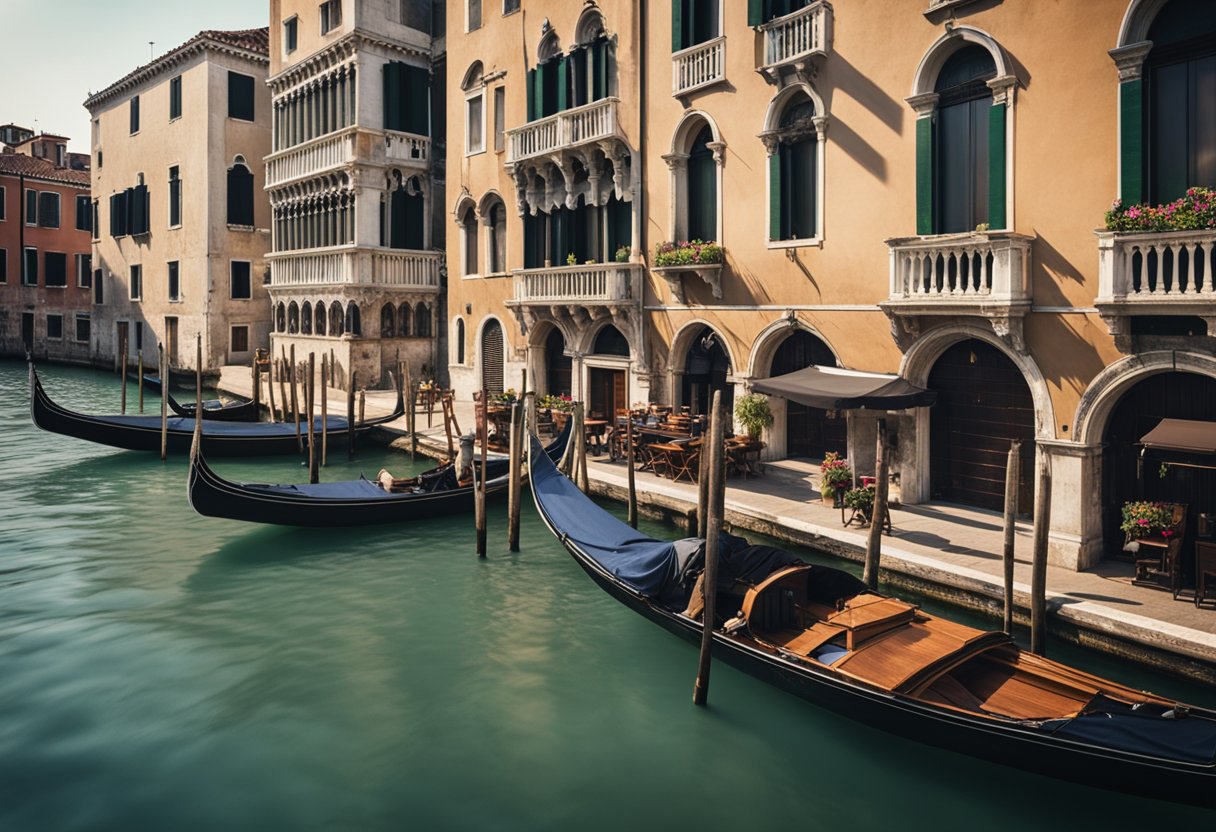
We shall explore the significant factors that led to the decline of the Venetian Republic, a storied maritime power that once dominated Mediterranean trade and politics.
Challenges to Venetian Power
Venice, renowned for its pivotal role in Mediterranean commerce, faced numerous challenges that eroded its standing. The rise of Genoa as a competing sea power signalled the beginning of Venice’s adversities. These two maritime republics were often at odds, vying for control over crucial trade routes and influence within the Byzantine Empire.
Venice’s dominance waned further as the Mediterranean region‘s geopolitics shifted. The emerging Atlantic trade routes impacted the traditional trade monopolies held by Venice, reducing its economic influence profoundly.
Downfall to Foreign Powers
The combined forces arrayed against Venice in the League of Cambrai in 1509 signified a dramatic turn in the republic’s fortunes. Major European powers, including France, the Holy Roman Empire, and even the Pope, sought to curb Venetian power. Though Venice survived this immediate threat, the damage to its military and financial strength was significant.
Venice’s struggle to maintain its territories, such as the loss of Cyprus to the Ottoman Empire, showcased its waning influence. Despite a victorious joint effort at the Battle of Lepanto, Venice could not reclaim its lost prestige. Subsequent concessions of territory to Austria and continued defeats by the Ottoman Empire further strained Venice’s ailing power, culminating in the republic’s ultimate surrender and fall.
Venice’s Maritime Legacy
Venice’s maritime prowess shaped the Mediterranean and has left an indelible mark on modern seafaring and commerce. Our focus is on how this influence manifests in current maritime trade and the enduring tradition of Venetian navigation.
Influence on Modern Maritime Trade
During the Middle Ages, Venetian merchants dominated the maritime trade routes in the Mediterranean Sea, using the strategic location of the city to facilitate trade between the East and West. Venice’s economy thrived on commerce, with its mercantile fleet traversing the Adriatic and reaching as far as the Dalmatian Coast. The commercial tactics and naval logistics developed by Venice laid the groundwork for modern maritime trade networks. The sack of Constantinople during the Fourth Crusade, though controversial, exemplifies Venice’s strategic use of naval power to bolster its economic position.
The Legacy of Venetian Seafaring
Venetian seafaring was synonymous with formidable naval architecture and navigational skill. This legacy of aquatic mastery continues to influence nautical traditions. The shipyards or Arsenale of Venice were the manufacturing hubs of the Venetian fleet, where innovation in design and assembly line production was far ahead of its time, setting standards for shipbuilding. The prowess of Venetian sailors and their expeditions across the Mediterranean during various military campaigns, such as the Crusades, promoted advances in naval technology and navigation that resonate in seafaring practices today.
Cultural Heritage and Modern Identity
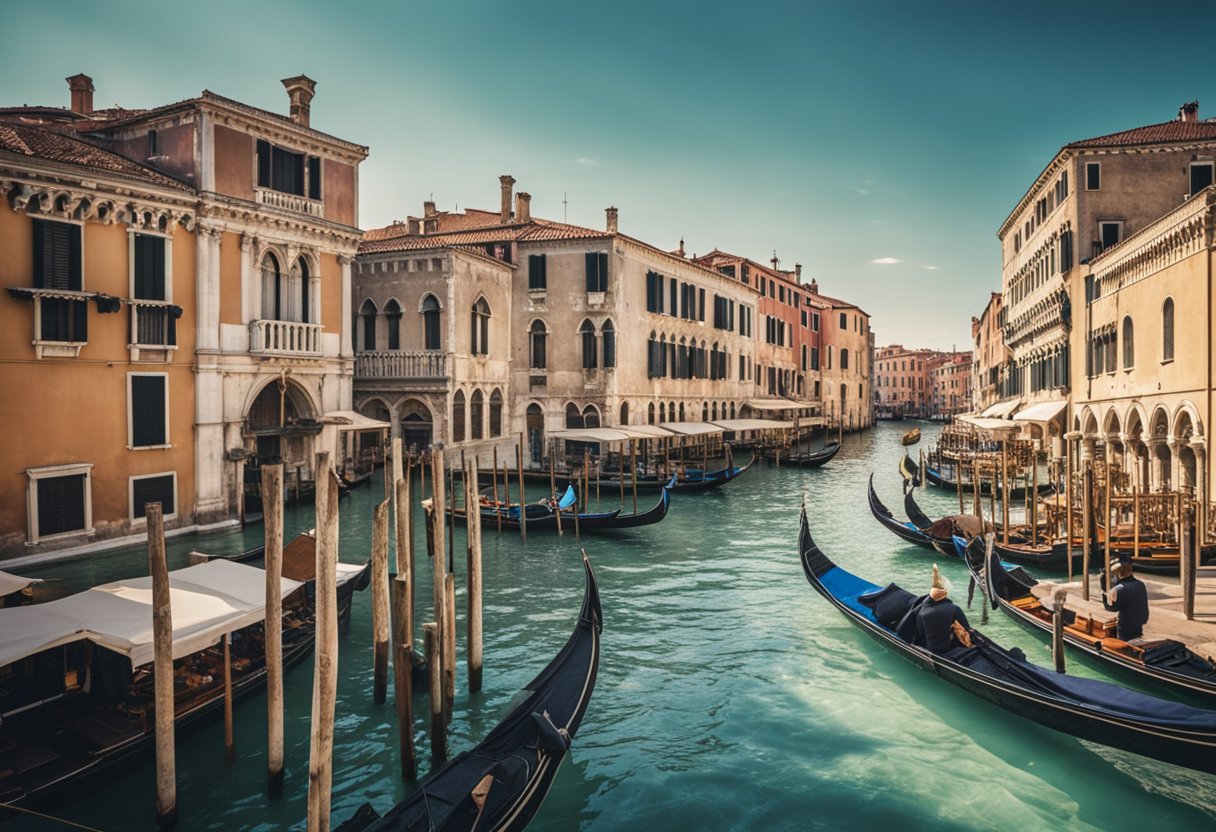
The Venetian Republic’s influence extends beyond its historical reign, seeping into the cultural identity and artistic expression that define Venice today.
Preservation of Venetian Art and Architecture
Venice’s intricate architecture and art are attentively preserved, showcasing the city’s prestigious past. Structures such as the ornate Doge’s Palace and the iconic St. Mark’s Basilica reflect the glory of Venice’s golden age. The Venetian Gothic style, with its characteristic play of light and colour, remains a testament to Venice’s unique aesthetics. Efforts by conservationists ensure that these architectural marvels, along with countless 18th-century artworks, continue to captivate and educate.
Contemporary efforts to preserve Venetian art are exemplified by restoration projects that maintain the grandeur of historic frescoes and sculptures found across the city. These projects help the safeguarding of Venice’s artistic legacy, championing it as an integral part of Italian and global culture.
Venice in Contemporary Culture
Venice’s timeless allure and vibrant history live on in contemporary culture, not just as a backdrop for tourism but as a central character in modern books and films. The city’s aesthetic and atmospheric canals often serve as inspiration, illustrating the locale’s inimitable charm.
In literature, Venice takes centre stage in a multitude of narratives, from mystery novels set in its winding alleys to historical accounts detailing the splendours of the Serenissima. Our modern perception of Venice is indelibly coloured by these cultural depictions that celebrate its storied past and enduring mystique.
Influential Personalities and Governance
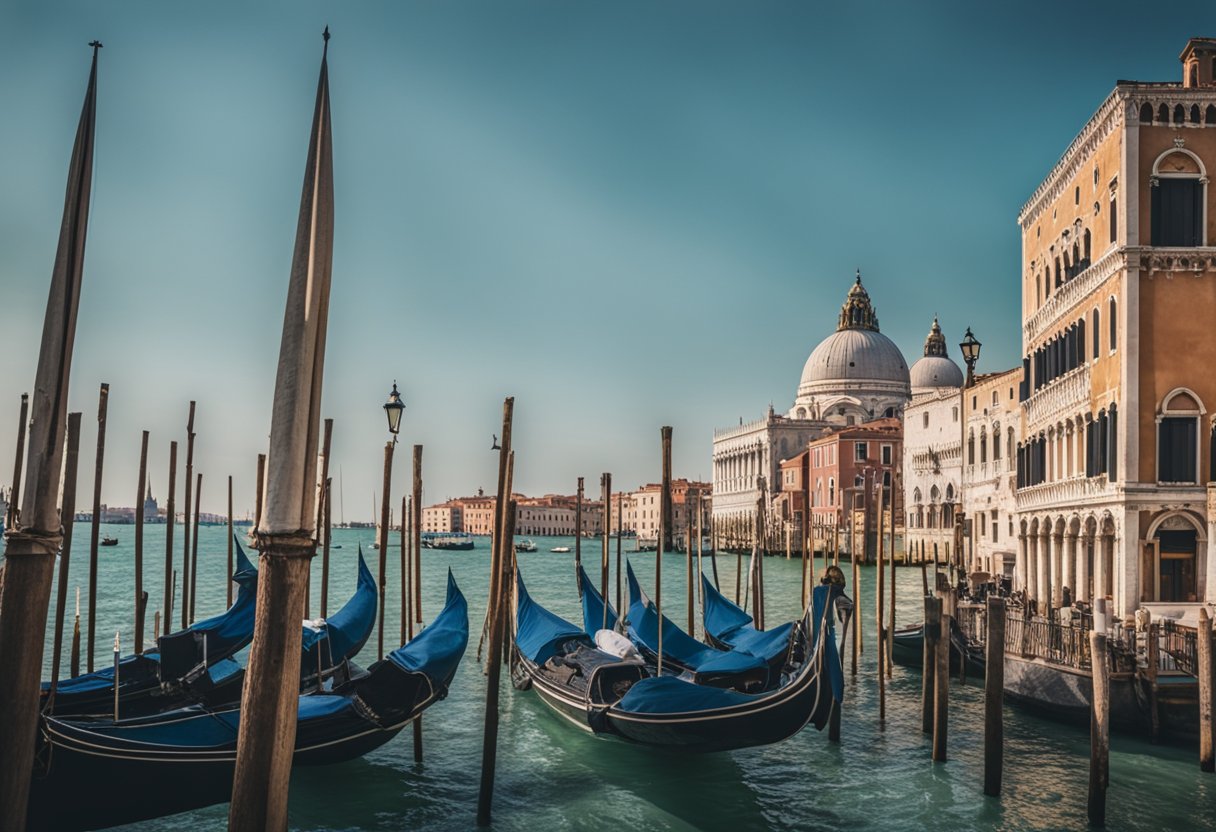
The governance of the Republic of Venice was marked by a sophisticated political structure, often revolving around the figure of the Doge, and enriched by various notable figures in its storied history.
The Doge of Venice
The Doge was the chief magistrate and leader of the Republic of Venice. Elected for life by the city-state’s aristocracy, the Doge’s powers were carefully restrained by Venetian constitutional tradition. Despite their limited power, Doges were influential figures, steering the republic through trade negotiations and military matters. Their residence, the Doge’s Palace, remains a symbolic structure in Venice, reflecting the city’s grandeur during its zenith.
Notable Figures in Venetian History
Throughout its history, Venice has been home to a wealth of influential personalities. The complexity of Venetian power structures saw the roles like the Duke of Milan, governors of Venetian provinces such as Rovigo and Bologna, and officials responsible for treaties—such as the Peace of Lodi—which were critical in navigating the power dynamics of the region, including those with the remnants of the Roman Empire. These individuals often played decisive roles in cultivating the Veneto’s position within the Mediterranean and beyond. The impact of these figures is undisputed in the realms of diplomacy, military strategy, and governance, enabling Venice to become a pivotal centre of trade and political power.
Frequently Asked Questions
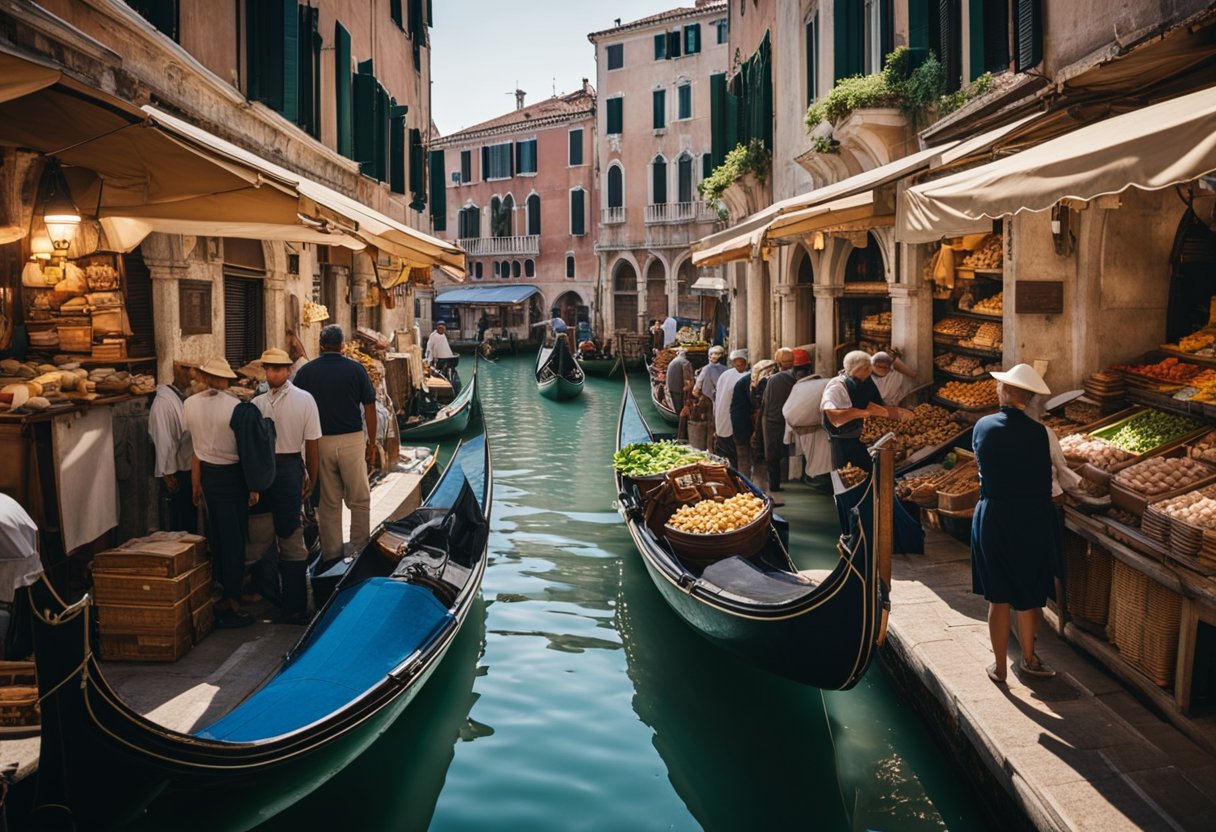
As we explore the remarkable saga of the Venetian Republic, a tapestry of commerce, governance, culture, and influence unfolds. Let’s address some of the most intriguing enquiries about this erstwhile Mediterranean titan.
How did the Republic of Venice become a dominant trading power in the Mediterranean?
The Republic of Venice attained its status as a dominant trading power through strategic maritime prowess and an extensive network of mercantile routes. Its favourable geographic location acted as a bridge between East and West, facilitating the flow of goods like spices, silk, and grain and fostering a thriving economy.
What were the distinguishing features of the Venetian government during the Republic’s peak?
During its acme, the Venetian government was characterized by a unique blend of oligarchy and a form of republicanism. The Doge of Venice served as the head of state, while the Great Council, composed of aristocracy, held substantial sway over the city’s governance, further reinforced by intricate systems of checks and balances.
In what ways did Venetian art contribute to the Renaissance, and why was it distinctive?
Venetian art was distinctive for its masterful use of colour and light, with artists like Titian and Bellini pioneering techniques that would shape the Renaissance. Venetian painters were renowned for their rich, vibrant palette and the atmospheric use of colour that created a sense of depth and emotion in their work.
Can you describe the extent of the Venetian Empire at the height of its power?
At the zenith of its power, the Venetian Empire encompassed vast territories, including parts of mainland Italy, the Dalmatian coast, and islands throughout the Adriatic and Aegean Seas. It held key strategic and commercial ports, such as Crete and Cyprus, which further cemented its renowned maritime dominion.
What were the main commodities exchanged in Venetian trade networks?
The main commodities in the Venetian trade were diverse and included precious metals, spices, textiles (particularly silk), grain, and salt. These goods were instrumental in establishing and sustaining the Republic’s economic might.
How did Venetian culture diverge from that of other Italian states during the Renaissance?
Venetian culture carved its distinct identity through a combination of maritime tradition, Republican values, and splendour reflected in its arts and architecture. Unlike other Italian states, Venice was influenced by its Eastern trade connections, infusing its dialect, cuisine, and customs with a unique blend of Byzantine and Islamic elements.






